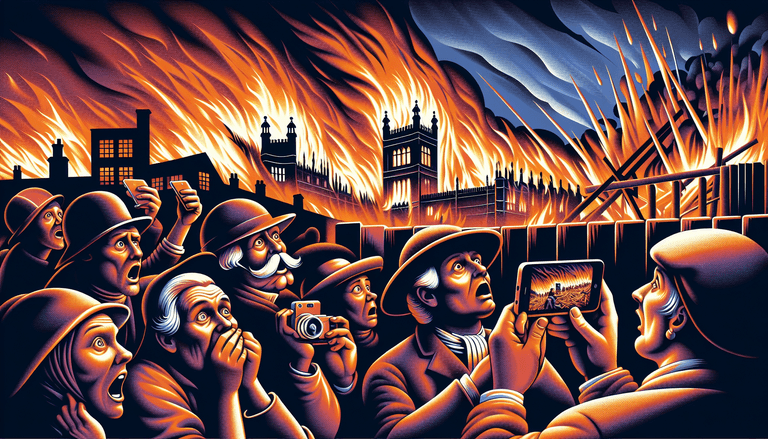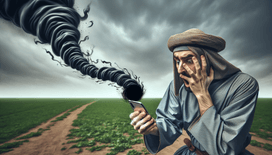Ah, the Great Fire of London, or as I like to call it, "London's Hottest Real Estate Opportunity of 1666." Imagine that fateful Monday morning, where the air was crisp, the toffee-apple tones from Pudding Lane beckoned, and a fire started that would engulf the city. But what if, instead of a bucket brigade, Londoners had to fight the flames of misunderstanding with the powerful force of social media?
Dousing Flames and Hashtags
The Great Fire of London isn’t merely the stuff of history books; it’s a cautionary tale about urban planning, or rather, the lack thereof. In this tech-transposed reality, every wisp of smoke would be instantly captured on Instagram, complete with Valencia filter, because #nofilter would hardly do it justice. Citizens might tweet their way through the fire, starting with posts like: "This bakery is lit! #PuddingProblems" or, as the wealthier folks in the city lament, "Oh crumb, this isn’t hot cross buns kinda day! #PoorHomes"
The "Blazing" Social Network Storm
Picture Lord Mayor Sir Thomas Bloodworth waking to a barrage of notifications. His timeline explodes with fiery commentary, some blame, and numerous gifs of confused calamity. Faced with this digital firestorm, one considers how swiftly and creatively misinformation might spread. Would Bloodworth’s infamous dismissal about the fire being a minor blaze have been a viral meme? Of course. "The roof, the roof, the roof is on fire… oh wait, the entire city is."
Meanwhile, ordinary Londoners could use Facebook groups to coordinate evacuation plans or check on neighbours. Gone would be the days of relying solely on the eerie silence of the encroaching blaze to signal an exodus. Instead, a well-timed status update reads: "Hey, watch out for Thomas Farriner’s new oven – it’s smokin’! Literally."
Influencers On Fire
In our alternate scenario, wooden shanties become "photo opportunities" for fearless influencers with a penchant for disaster documentation. They'd risk a singe or two for that perfect "fire selfie". The narrative streams onto YouTube where vlogging titled "Blazing Through London" garners immediate hits. "Hey guys, today we are doing the 'surviving a fire challenge' in one of London's quaintly combustible alleys!" Imagine the unboxing videos: "Today, we’re checking out what’s left in my burnt-out flat!"
And let's not forget the enterprising individuals using LinkedIn. Crafty tradesmen touting their carpenter skills could post, "Need a new ceiling after the fire? Let's connect over tea – everything's rebuilt better with me!"
Modern Tech for Better Disaster Management
Humour aside, social media, with its far-reaching ability to inform and update in real-time, could have genuinely impacted how this catastrophe unfolded. Consider a city-wide #LondonRising initiative on Twitter, fostering community and shared resilience. Real-time updates could have changed evacuation routes, saved lives, and perhaps, with adequate response coordination, slowed the city's fiery demise.
History tells us the Great Fire decimated approximately 87 churches and left tens of thousands homeless, but imagine volunteers coordinating rebuilding efforts through a grassroots campaign on Kickstarter or GoFundMe. Perhaps residents could have restored what was lost while forging tighter-knit communities.
Conclusion: A Burnable History Lesson
In this blazing adventure with technology, we reflect on an iconic tragedy through the prism of modern connectedness. While social media can fuel as many arguments as it douses, its power in crisis management is undeniable. So next time you’re tempted to belittle the social media flame wars, be heartened by the thought that a modern-day Pudding Lane might very well yield a chicloote-filled viral thread, and a thought-provoking alternative to disaster.
And remember, even in the blistering heat of chaos, a little humour helps the smoke go down – much like a spoonful of sugar makes the pudding rise, dear readers!







